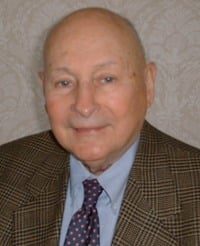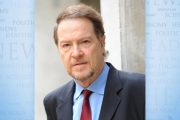
Ten years after 9/11, we are finally getting the truth about how our expensive, bureaucratic security services totally bungled their investigations into Islamic terrorism so that 19 Islamic terrorists could hijack four airliners, fly two of them into the twin World Trade Center towers in Manhattan, and fly one into the Pentagon, while one crashed into a field in Pennsylvania. While the Bush administration had been warned in August that a terrorist attack was in the making, the warning gave no specifics. Meanwhile, the FBI and the CIA were working at cross-purposes to get the specifics, but were incapable of putting two and two together.
It proved once again that big government is too clumsy, too bureaucratic, too turf-protective to do what it is supposed to do: protect this country from its enemies, domestic and foreign. The lessons learned after 9/11 improved things a bit, but not enough to stop the shoe bomber and the underwear bomber from boarding planes they were intent on blowing up. It was the passengers who saved the day. The FBI couldn’t prevent another terrorist from trying to blow up a vehicle in Times Square, New York. A street vendor alerted the police. And they couldn’t prevent Major Nidal Malik Hasan, a radical Muslim Army psychiatrist, from killing 13 of his fellow soldiers and wounding 29 at Fort Hood, Texas.
In a stunning 9/12/11 Newsweek article, reporter Philip Shenon writes:
Special Agent Harry Samit of the FBI’s Minneapolis office knew he was looking into the eyes of a terrorist. It was early afternoon on Friday, Aug. 17, 2001 [24 days before 9/11]. Across from him sat Zacarias Moussaoui, a 33-year-old French-born student arrested the day before for overstaying his visa. Moussaoui had paid more than $8,000 in cash that summer to sit in a cockpit simulator in a flight school in the suburbs of Minneapolis and learn — in a matter of days — the basics of how to fly a 747-400. Samit, a former intelligence officer at the Navy’s celebrated Top Gun flight school, felt sure the man across the desk from him was a Muslim extremist who was part of a plot to hijack a commercial jetliner filled with passengers.
Samit then informed the bureau in Washington of his suspicions. But the counter-terrorism specialist in D.C., Michael Maltbie, saw no clear link between Moussaoui and al Qaeda, which was technically needed for a warrant. But, Samit, believing that a hijacking plot was imminent, got his boss Greg Jones to call Maltbie in Washington. Jones told Maltbie that Moussaoui might be part of a plot to hijack a plane and crash it into the World Trade Center. Maltbie was skeptical but he made sure that his boss, Michael Rolince, head of the FBI’s International Terrorism Operations Section, was informed. Rolince spent less than 20 seconds being briefed about Moussaoui that August, but he did not consider it serious enough to take the matter to the White House.
Meanwhile, CIA head George Tenet was briefed on Moussaoui a few days after his arrest. But the FBI’s outgoing chief, Louis Freeh, was not informed. Back at Minneapolis, Samit and his colleagues were closer to uncovering the 9/11 plot than previously known. Reporter Shenon writes:
A Newsweek investigation shows that the officials directly involved in the case were denied access to a key internal memo—prepared for outgoing FBI Director Louis Freeh—that could have allowed the Minneapolis field office to connect the dots and possibly preempt the attacks. Their efforts were thwarted by a group of arrogant, slow-moving supervisors at FBI headquarters.
“Arrogant, slow-moving supervisors,” a fitting description of big-government bureaucrats who are more interested in protecting their backsides than protecting the people of the United States.
In 2001, Moussaoui inquired by email about taking flight lessons at the Pan Am Academy in Eagan, Minnesota. He said he was a French businessman. But when he showed up, flight instructor Tim Nelson was quite surprised:
“So I’m expecting a Rolex and Guccis. Instead, he’s wearing this ratty old T-shirt and a baseball cap.”
Moussaoui then shelled out $8,600 in $100 bills just for 12 hours of instruction in a 747-400 simulator and two hours in a classroom. Nelson became even more suspicious when Massaoui conversed in Arabic with two Syrian pilots in training at the Academy. So at 8:15 a.m. on August 15, he called the FBI in Minneapolis. By 10 a.m. Samit was on the case. He wrote a formal request to Washington for an emergency search warrant so that they could examine Moussaoui’s laptop and luggage. He also sent urgent messages to our embassies in Paris and London to see if they had anything on Moussaoui. He then sent a separate note to Maltbie urging him to notify the Secret Service about the case.
On August 22, the U.S. embassy in Paris informed Samit that Moussaoui was a recruiter for Ibn Omar al-Kattab, an Islamic extremist and Chechen guerrilla allied with Osama bin Laden. But Maltbie, at his desk in D.C., saw no evidence that Moussaoui was connected to a foreign government or well-known terrorist group, and thus no search warrant was forthcoming.
Samit then contacted a CIA counterterrorism expert who confirmed in writing that “Kattab was a close buddy with bin Laden from their earlier fighting days.” And then it turned out that the FBI also knew of the link. In April 2001 a memo had been prepared for Freeh warning of plans for terrorist attacks in the United States by “Sunni extremists with links to Ibn al-Kattab, an extremist leader in Chechnya, and to Usama Bin Laden.” But apparently, the memo never got to Maltbie or his boss David Frasco. Shenon writes:
Copies of the Freeh memo were directed to eight senior officials at the FBI, including Michael Rolince, who oversaw the work of Frasco and Maltbie, among many others at HQ. Rolince said he had no recollection of ever seeing the document. (He also tells Newsweek he never saw another memo, directed to his staff by the FBI’s Phoenix office, calling attention to the unusual number of young Arab men tied to Muslim extremist groups who — like Moussaoui — were seeking pilot training. The Phoenix memo recommended a nationwide investigation of flight schools.)
Meanwhile, Maltbie had been working on getting Moussaoui deported for overstaying his visa. He sent a memo to Minneapolis at 8:34 a.m. on the morning of 9/11 providing the bureau with details of the deportation order. Twelve minutes later the first hijacked airliner slammed into the north tower of the World Trade Center in New York. Maltbie immediately called Minneapolis.
He spoke with agent Coleen Rowley who told Maltbie that it was imperative to get a judge to approve a search warrant of Moussaoui’s belongings. But Maltbie told her that the crash in the north tower was probably just a coincidence, and that there was no need to get a warrant until she heard back from him.
It was only after the terrorists had completed their destruction and killed 3,000 human beings that the FBI got a federal judge to approve a search warrant. The agents found enough incriminating evidence which could have led them to expose the entire 9/11 plot when they asked for the warrant back in August.
Moussaoui pled guilty to conspiring in the 9/11 plot and was sentenced to life in prison. Samit still works in the FBI’s Minneapolis office, but he is barred from speaking with reporters. Maltbie was promoted after 9/11 and transferred to the FBI’s Cleveland office. Frasco spent four years in Europe working for the FBI and is now retired. Rolince was promoted after 9/11.
That’s how a bureaucracy works. Employees are judged by their loyalty, not their success or failure. Has the FBI become too big to fail? Indeed, all of the bloated bureaucracies in Washington have simply become an onerous burden on the backs of the American people, who are getting less and less bang for the buck the bigger the government gets.
What was the CIA’s role in all of this? George Tenet writes in his memoir, At the Center of the Storm:
In my view, another opportunity may have been lost by the inability of the FBI lawyers to figure out a way to search the luggage of Zacarias Moussaoui. The first time I heard of him was on August 23, 2001, when CTC provided me with a terrorist threat update covering a large number of topics. . . . The last item was about Moussaoui. The briefing chart was entitled “Islamic Extremist Learning to Fly.” . . .
As alarming as the information on Moussaoui was, I was comforted by the fact that the FBI had its hands on the guy. My assumption was that the Bureau would, as standard practice, brief Dick Clarke’s Counterterrorism Security Group at the NSC, and the case would be well covered.
The Bush administration was later criticized for not heeding the warning that Muslim radicals were planning terrorist attacks in the United States. But they were given no specifics of when or where, and the FBI was acting too much like a bureaucracy to be of any help. When government gets that big and that comfortable, it becomes dysfunctional. And there is no indication that the FBI has learned any lessons from its failure to protect the American people on 9/11.



